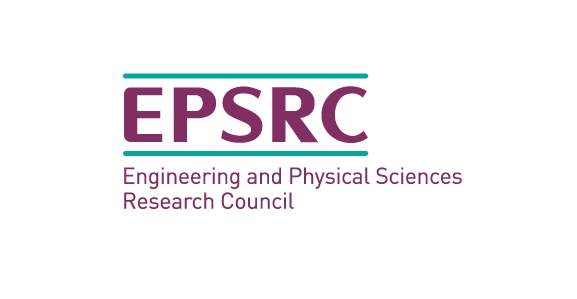Challenge 2 - Extreme Surfaces
The context here for an “extreme” interface goes beyond the conventional definition related to high loads and/or temperatures (e.g. cutting tools used in dry/abusive/cryogenic machining processes1 or ball valves for cutting off oil/gas flow2), or severe environments such as in space. In this work we will consider contacts that are “extreme” because they have highly transitory contact conditions (e.g. wheel/rail and car tyre/road interfaces constantly change as vehicles move3, engine stop/start operation4, oil riser layers with multiple interfaces5), and/or they are exposed to open operating environments that can produce a variety of third-body layers (e.g. wheel/rail interface, car tyre/road, shoe/floor 6, excavation/mining tools7), and/or complex materials are involved (e.g. rubbers, biomaterials, metal matrix composites). In these contacts a wide range of friction conditions exist that can greatly influence the performance of the contact and that they are hard to understand, and subsequently model, because they are so complex. Also included are contacts in extreme situations with near-impossible monitoring and maintenance opportunities (e.g. sea bed/sea installed ball valves for cutting off oil/gas flow; mechanical sub-sea oil pipe repair connectors8; oil risers; off-shore wind turbines9, nuclear power components10) therefore very high confidence is needed in the predicted behaviour as they must provide consistent performance and integrity for extended periods (typical ranges are 20-30 years). For most of these interfaces there are modelling tools of varying degrees of complexity and accuracy to predict the contact conditions. They are all limited in how they deal with friction and often it is actually an input! A good example is the multi-body dynamics simulation approach used for modelling railway vehicle/track interactions. Typically friction is an input and changes in condition due to application of lubricant in curves, or changes in environmental effects, is dealt with by simply changing the friction level for that section of track. In reality friction changes constantly with the partial slip value in the interface. These simplifications can lead to inaccuracies in the contact force outputs. These are then typically used as inputs to damage models that then output inaccurate predictions. In this case, improved friction/slip models are key to improve the dynamic simulations. These need to take account of the ever changing third-body layer situation and changes in contact stress and speed. The team in Leeds and Sheffield have experience of:
- Sensing of oil film thickness and contact interactions in dry and lubricated conditions (Dwyer-Joyce, Lewis)
- Extreme conditions associated with manufacturing processes (Marshall/Slatter/Neville/Liskiewicz)
- Wear in various extreme conditions (Slatter/Dwyer-Joyce/Lewis)
- Sensing of corrosion processes in extreme oilfield conditions (Neville/Morina)
- Extreme conditions leading to phase transformations occurring in biomedical implants (Bryant/Neville)
 This Challenge addresses the need to integrate sensing modalities where there is a complex mix of high loading, chemical reactions and other factors defining an “extreme interface”. It will also include eddy current and electrochemical sensing to enable new dissipative energy models to be developed. There is a circle of interdependent processes in both projects, none of which are controlled by design. For the first time we will link the dissipation of energy (through frictional analysis) with the nature of the electrochemical and mechanical interface and its evolution.
This Challenge addresses the need to integrate sensing modalities where there is a complex mix of high loading, chemical reactions and other factors defining an “extreme interface”. It will also include eddy current and electrochemical sensing to enable new dissipative energy models to be developed. There is a circle of interdependent processes in both projects, none of which are controlled by design. For the first time we will link the dissipation of energy (through frictional analysis) with the nature of the electrochemical and mechanical interface and its evolution.
Surface Transformed Layers (STLs) have been identified and attributed to energy input at the asperity level. The taper junction environment is unique in that the motions within it are ill-defined and in this project it is used as an example of an extreme environment. The biomechanics of a particular gait are well understood and can be accurately replicated in a hip simulator. However the challenge comes when considering what the interface has experienced during the period of service and understanding if it has been in steady state or whether changes in the release of ions and production of debris have led to changes in friction/wear. This all leads to the need for sensing in the interface, sensing to quantify local and global micromotions and sensing to probe the local temperatures and aqueous conditions in the interface. This project will integrate sensing technologies to enable the taper interface processes to be understood.
The third-body layer (3BL) is complex for the wheel/rail contact as it is an open system and is a natural layer of oxides and wear debris. This is affected by natural contaminants such as leaves and water. These can, because of poorly understood chemical reactions, lead to formation of low adhesion “pastes” or bonded layers on the rail head surface respectively that are hard to mitigate against. Low adhesion can lead to station overruns or signals passed at danger and possibly train collisions so is critical to understand. These improvements are required to develop improved friction models for extreme interfaces (as defined earlier):
– Better physical understanding of interface friction mechanistic behaviour, particularly with 3BLs present, and key influencing parameters across different length scales.
– More real time in-situ data on the make-up and properties of 3BLs and their effects on interfaces.
– Better knowledge of how 3BLs are formed and sustained (or not).
– Improved ability to scale behaviour from small laboratory experiments where conditions can be tightly controlled, but realistic interfaces are not achieved, to full-scale field applications.
Personnel
Co-Investigators
- Dr. Tom Slatter – Challenge Leader
- Dr. Tomasz Liskiewicz – Challenge Leader
- Dr. Michael Bryant
- Prof. Mojtaba Ghadiri
- Prof. Rik Drummond-Brydson
- Prof. Matthew Marshall
- Prof. Roger Lewis
- Prof. Mark Rainforth
- Dr Shahriar Kosarieh
- Dr Farnaz Motamen Salehi
Postdoctoral Staff
- Dr. Rob Beadling – Project 2
- Dr. Mike Watson – Project 5
1Bartarya, G., Choudhury, S.K., 2012, “State of the Art in Hard Turning”, International Journal of Machine Tools and Manufacture, Vol. 53, No. 1, pp1-14.
2Houghton, A.J., Lewis, R., Sundh, J., Olofsson, U., 2011, “Characterising and Reducing Seizure Wear of Inconel and Incoloy Superalloys in a Sliding Contact”, Wear, Vol. 271, pp911-924.
3Lewis, R., Olofsson, O., editors, 2009, Wheel/rail Interface Handbook, Woodhead Publishing Ltd.
4Summer, F, Grün, F., Schiffer, J., Gódor, I., Papadimitriou, I., 2015, “Tribological Study of Crankshaft Bearing Systems: Comparison of Forged Steel and Cast Iron Counterparts under Start–stop Operation”, Wear, Vol. 338–339, pp232-241.
5Burke, O., “Tribology of the Anti-Wear Layer Used in Flexible Oil Risers”, PhD Thesis, The University of Sheffield.
6Clarke, J.D., Hallas, K., Lewis, R., Thorpe, S., Hunwin, G., Carré, M.J., 2015, “Understanding the Friction Measured by Standardised Test Methodologies used to Assess Shoe-Surface Slip Risk”, Journal of Testing and Evaluation, Vol. 43, No. 4, pp723-734.
7Gill, W.S., Marshall, M.B., Lewis, R., Hall, B., Bolton, S., 2016, “Pipelines Indent Failure Analysis using Steel Precision Ball under Subsea Conditions”, Proceedings of Nordtrib 2016, Finland, 14-16 June 2016.
8Menezes, P. L., 2016, “Influence of Friction and Rake Angle on the Formation of Built-up Edge during the Rock Cutting Process”, International Journal of Rock Mechanics and Mining Sciences, Vol. 88, pp175-182.
9Long, B.T., Machado de Azevedo, H.D., Araújo, A.M., Bouchonneau, N., 2016, “A Review of Wind Turbine Bearing Condition Monitoring: State of the Art and Challenges”, Renewable and Sustainable Energy Reviews, Vol. 56, pp368-379.
10Blau, P.J., 2014, “A Multi-Stage Wear Model for Grid-to-Rod Fretting of Nuclear Fuel Rods”, Wear, Vol. 313, p89-96.


